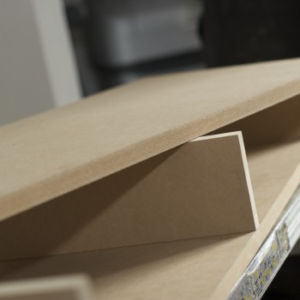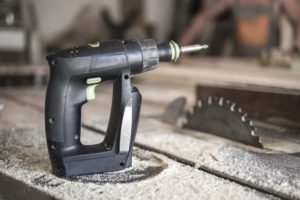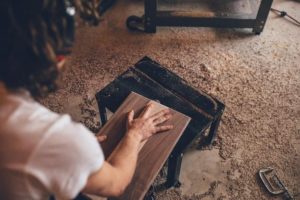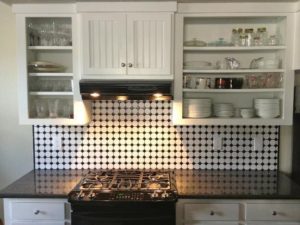MDF Power Tools and Dust: What You Need to Know


Medium Density Fiberboard, or MDF, is a great product for a number of home improvement projects. It’s used for cabinetry, furniture and trim in houses around the world. But while traditional MDF is a wood-based product, it’s not the same as using lumber.
This can be advantageous, from both a cost and sustainability perspective, but also means you’ll need to need to consider a few different factors when it comes to choosing tools and managing MDF dust.
Choosing the Right Power Tools for MDF

When choosing power tools for cutting and drilling MDF, consider the following:
- Use a triple chip blade or ATB blade with particle hook.
- Fully support the boards as they’re being cut and use a solid guide — not just a 2X4 — to limit the tension on the blade.
- Keep blade tips sharp between uses.
- Consider corded power tools, rather than battery-powered ones, if you’re going to be doing a lot of cutting or drilling on a large project. Because of the density of MDF, it can burn through a battery faster than cutting or drilling wood or plywood.
Managing MDF Dust

All wood generates a certain amount of sawdust when it’s being cut or drilled. While we typically think of sawdust as being pretty heavy, it’s also made up of fine particulate matter that is actually suspended in the air for a long time. Why is this important? Because if it accumulates and comes in contact with a static charge, it can cause an explosion.
MDF dust is often finer than the dust generated from lumber because it is already made up of processed wood particles, so it’s especially important to find ways to minimize the dust it creates. In addition, because MDF is made with resins and binders, the composition of MDF dust is different from general sawdust and needs to be dealt with in different ways.
Health and safety best practices say that, when trying to reduce a hazard, there are three approaches to removing or managing the hazard. In order of preference, they are:
- At the source. Management approaches at the source include either choosing a product with an alternative formulation, handling the product in a way that doesn’t generate the same hazard, or operating it somewhere safer.
- On the path. If an alternative formulation can’t be used, or if product handling can’t be changed, then the next best option is to find a way to reduce the hazard as it moves from the source to the individual.
- At the individual. If full control can’t be achieved at the source or on the path, then the third option is to protect the receptor, i.e., the person working with the material, as well as anyone else close by.

When dealing with MDF dust, here are some suggested ways to manage the issue:
At the Source
The first step to managing MDF dust is to choose a more environmentally friendly formulation. Choosing an MDF product that is designated as NAF (no-added-formaldehyde) to help reduce the risk of accumulating dust.
Along with choosing a NAF MDF product, the other option is to have it cut elsewhere. If you’re working on a project that only requires a small amount of MDF — for instance, if you’re adding a single shelf to a cabinet — you can often ask to have your MDF cut to size at the store or lumber yard. These places will be set up to reduce and manage dust, so you don’t have to.
On the Path
If you still need to cut MDF on-site or in a home workshop, then you’ll need to take precautions to manage dust, both in terms of stopping accumulation in your workshop and keeping it from getting circulated into your home.
Some carpenters will use a fixed wet/dry vacuum. Wet/dry vacuums can be used by attaching them directly to your cutting or grinding equipment, so it sucks up the dust as it’s created. The challenge with wet/dry vacuums is that they’re usually installed at one place in a workshop, so you need a hose that will reach everywhere you need it to, which can be awkward and cumbersome.
An alternative to wet/dry vacuums is a dust extractor or dust collector. Dust collectors also use a fan to pressurize a localized work area and draw the dust off as it’s produced. The advantage of a dust collector is that they are often portable and can be moved around the workshop to where they’re needed.
At the Individual
Even with good housekeeping and the right control equipment, health and safety organizations still recommend the use of personal protective equipment when cutting and drilling MDF. This includes a respirator with cartridges rated for dust and formaldehyde, as well as safety glasses.
Once the work is done, always take the time to wash your hands and remove dusty work clothes, to avoid carrying MDF dust to other parts of your worksite or back home.

Start Your Next Project
MDF is a long-lasting product that can be used for a number of home carpentry applications. By choosing the right tools and the right dust control equipment, you can have a finished project that looks great, while keeping your work and home safe.
For more information on MDF and to find the right product for your next project, visit the Columbia Forest Products website.